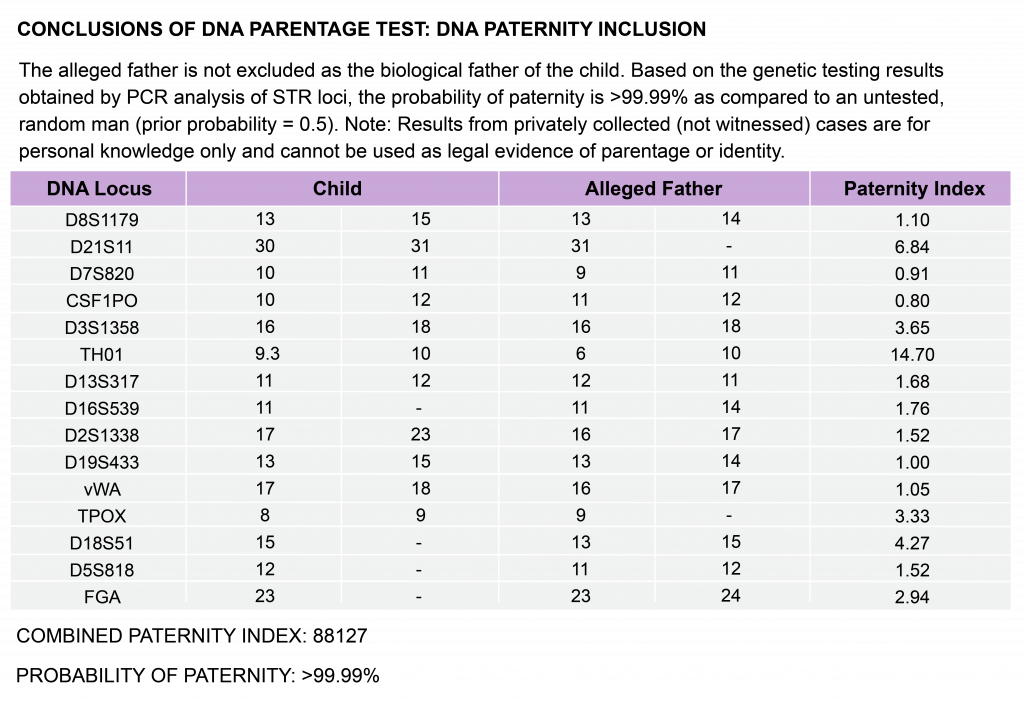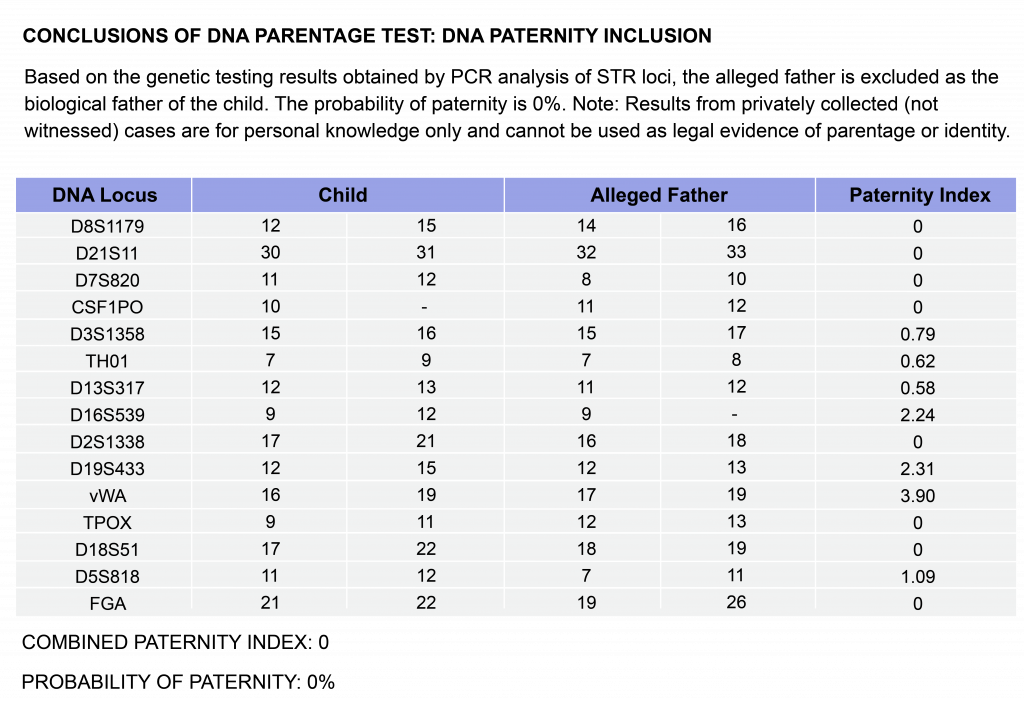4.7 Wrapping Up: The Science of Paternity Testing
 The Science of Paternity Testing
The Science of Paternity Testing
Humans as a species are not especially diverse, genetically at least. Compared to our nearest relatives, the chimpanzees, we are quite homogeneous—that is, most of our alleles are the same within a population, and each human differs from other humans by, on average, 0.1% of their DNA. This may not seem like much, but if we have 3 billion bases in our genomes, then we expect that any two humans will differ by approximately 3 million bases. This population-level variation can make DNA testing fairly reliable. Paternity testing focuses on genes that are known to vary in the population. For each allele a child shares with the alleged father, the probability of paternity increases.
A DNA test is performed by collecting DNA, typically by using a cotton swab to gather cells from the inside of an individual’s mouth. Samples are sent to a laboratory, where DNA is isolated from the rest of the cell tissue and amplified using a process called the Polymerase Chain Reaction. The polymerase chain reaction refers to a series of steps in which DNA is heated and cooled repeatedly. Heat-stable enzymes (isolated from a hot-springs-dwelling bacterium) catalyze the rapid production of billions of copies of DNA. A child’s amplified DNA can then be compared to that of the mother and the alleged father. Several genes are analyzed in order to generate a Combined Paternity Index (figure 3). Many laboratories test fifteen or more genes, and boast probability of paternity confidence levels of 99.99%. If the child does not possess any of the male’s alleles, the man will be excluded from paternity.
Confirming paternity can be beneficial for families. Men who are assured of paternity spend more time with their children, save more money for education, and are less likely to abandon the child’s mother. Paternity testing can also be critical in legal cases that involve child support. But is paternity testing always a good thing? Could some test results have psychological costs for children and parents? In other words, do we pay a price to have such easy access to DNA technology?


Consider the following questions
You have been told that individual X is the father of child Y, according to the results of a DNA test.
- What does that mean? How was this determined?
- If you are told that this relationship is certain, with 99.99% confidence in paternity, does this information add anything to your understanding? Explain.

